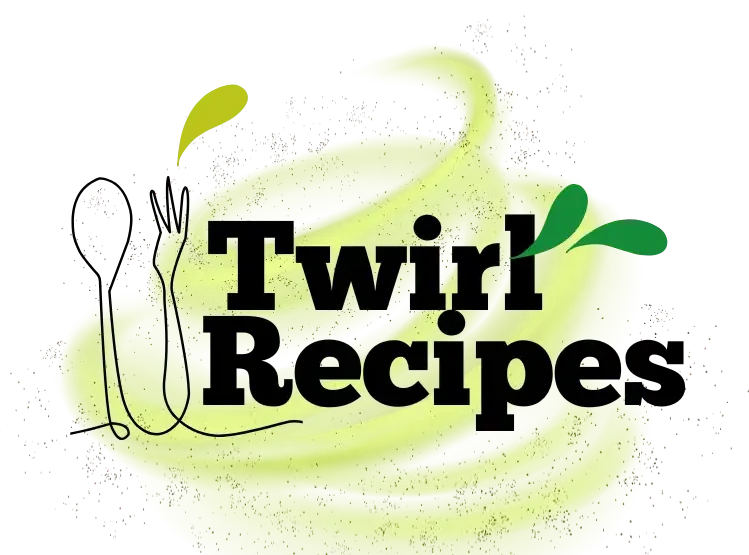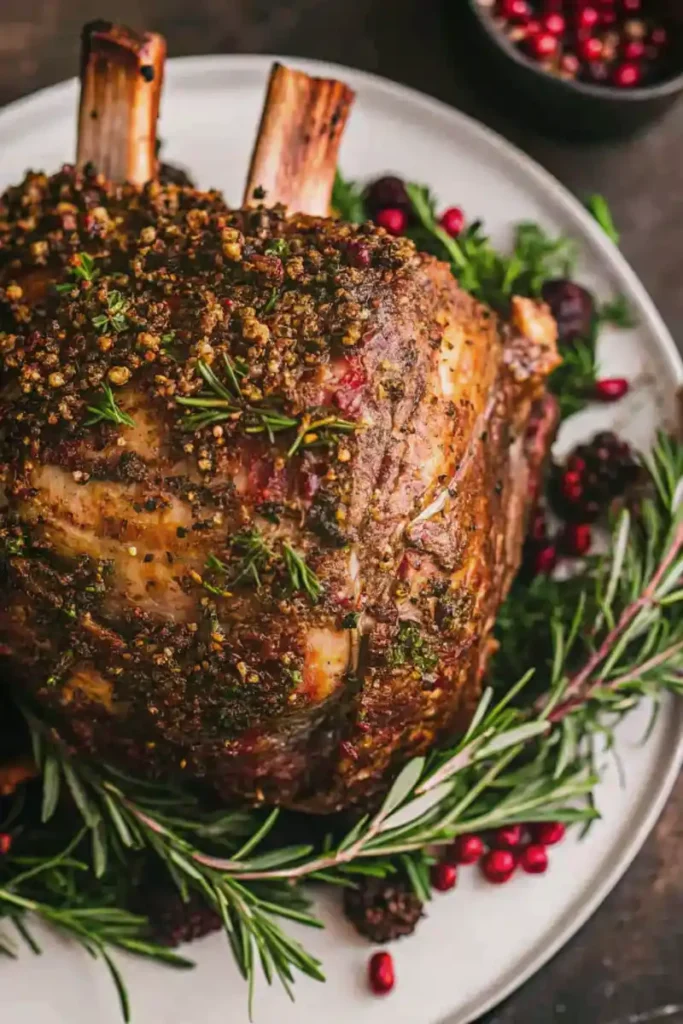Are you ready to take your prime rib to the next level? A flavorful prime rib dry rub is the secret weapon you didn’t know your kitchen needed! Not only does it enhance the natural richness of your roast, but it also creates that irresistible crust everyone craves. Whether you’re hosting a holiday dinner or treating your family to a special meal, this guide will walk you through every detail to make your prime rib unforgettable.
JUMP TO
Why You’ll Love This Prime Rib Dry Rub
What Makes a Good Dry Rub?
A good dry rub is all about balancing flavors—salt, spice, and a touch of herbal goodness. It’s like creating a magic potion for your prime rib. This prime rib dry rub brings together a blend of savory spices that not only complement the meat but also elevate it to gourmet status. Plus, it’s so versatile you can even use it on other cuts like roast beef or steaks.
Perfect for Every Occasion
What makes this rub even more delightful is its adaptability. Hosting a festive dinner? This rub adds sophistication to your meal. Got a barbecue planned? It’s your perfect grilling companion. And hey, even if it’s a simple Sunday dinner, this dry rub turns your meal into something extraordinary. Try pairing it with a creamy side dish like this Cajun Shrimp Pasta Recipe for a feast that pleases every palate.
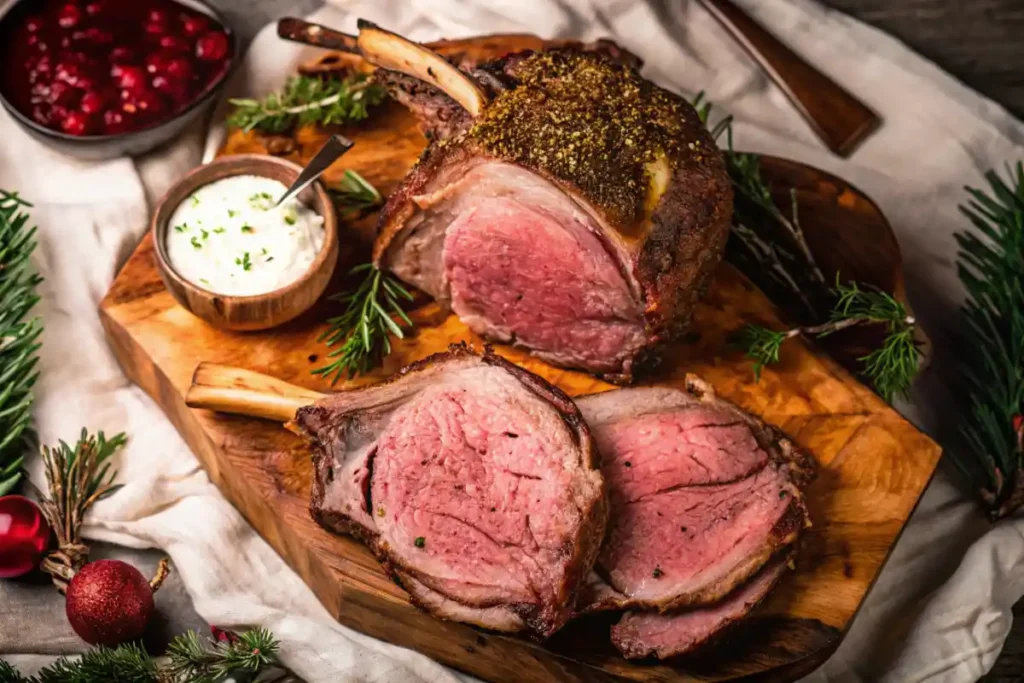
Benefits of Using a Dry Rub on Prime Rib
Flavor Infusion
Using a prime rib dry rub isn’t just about seasoning; it’s about unlocking a depth of flavor that will have everyone asking for seconds. The spices seep into the meat, enhancing its natural juices and creating a burst of taste in every bite. Plus, the dry rub helps form a caramelized crust that locks in those juices while adding a satisfying texture.
Improved Texture
Let’s talk about that crust—crispy, golden, and absolutely mouthwatering. A well-applied dry rub does more than flavor the meat; it creates a perfectly seared exterior while keeping the inside tender and juicy. Think of it as the ultimate upgrade to your prime rib’s texture!
Healthier Alternative to Marinades
While marinades are great, dry rubs are a healthier option because they skip the added sugars and oils. You still get all the flavor without the unnecessary calories. If you’re looking for other ways to lighten up your meals, check out our guide on Substitutes for Heavy Cream to keep things delicious and guilt-free!
A prime rib dry rub isn’t just seasoning—it’s a game-changer that transforms an ordinary roast into something extraordinary.
What You’ll Need: A Detailed List of Ingredients
To create the ultimate prime rib dry rub, you’ll need a mix of pantry staples and a few optional ingredients to customize the flavor.
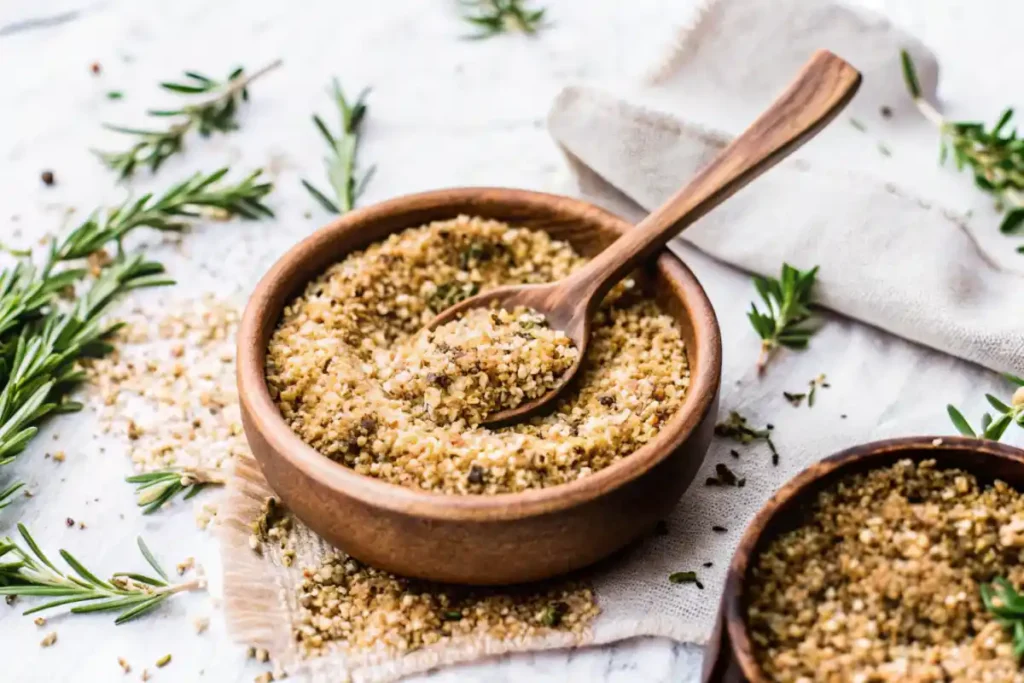
Essential Ingredients
- Kosher Salt (2 tablespoons): Enhances the meat’s natural flavors and locks in moisture.
- Freshly Ground Black Pepper (1 tablespoon): Adds a bold, sharp kick that pairs beautifully with beef.
- Garlic Powder (1 tablespoon): Brings a savory, earthy depth to the rub.
- Onion Powder (1 tablespoon): Balances the blend with a hint of sweetness.
- Paprika (1 tablespoon): Adds color and a subtly smoky, sweet layer.
Optional Ingredients for Customization
- Mustard Powder (1 teaspoon): Provides a tangy zing for extra complexity.
- Crushed Rosemary or Dried Thyme (1 teaspoon each): Elevates the rub with fresh, herbal notes.
- Cayenne Pepper (½ teaspoon): For a touch of heat, perfect for those who like a spicy kick.
- Brown Sugar (1 teaspoon): Adds a hint of sweetness and helps create a caramelized crust.
Substitution Suggestions
- Smoked Paprika: For an intensified smoky flavor, swap it with regular paprika.
- Sea Salt: A suitable alternative to kosher salt, though it’s finer and may need adjustment in quantity.
- Roasted Garlic Flakes: Use these for a subtler garlic flavor.
Assemble these ingredients for a dry rub that transforms your prime rib into a show-stopping dish. And if you’re in the mood for a versatile side, don’t miss our guide to Sourdough Discard Bagels for a perfect pairing!
How to Make and Apply a Prime Rib Dry Rub
Crafting your own prime rib dry rub is as easy as mixing a few ingredients, but applying it correctly is where the magic happens. Follow these steps for a flawless result:
- Gather Your Ingredients
Measure out all the essential and optional ingredients from the detailed list above. Freshly grinding spices like black pepper or rosemary can enhance the flavors even more. - Mix the Rub
In a medium-sized bowl, combine the kosher salt, black pepper, garlic powder, onion powder, paprika, and any optional spices you’re using. Stir well to ensure all ingredients are evenly distributed. - Prepare the Meat
- Begin by patting your prime rib dry with a paper towel. Removing excess moisture helps the rub adhere better.
- If you want a deeper flavor infusion, score the fat cap lightly with a sharp knife, creating a diamond pattern.
- Apply the Rub Generously
- Using your hands, coat the entire surface of the meat with the dry rub. Don’t be shy—press it in firmly to ensure it sticks.
- For an even coating, sprinkle the rub from a height of 6-8 inches to distribute it evenly across the meat.
- Let It Rest
- Once the rub is applied, wrap the prime rib tightly in plastic wrap and let it rest in the refrigerator for at least 2 hours, but ideally overnight. This gives the flavors time to penetrate the meat.
Pro Tip: If you’re in a rush, you can apply the rub just before cooking, but allowing it to marinate will always yield better results. For more time-saving tips, check out our quick recipes like this 4-Ingredient Potato Soup.
Expert Tips for Perfect Results
Choosing the Right Cut of Meat
Selecting the perfect prime rib is key to making this dish shine. Opt for a well-marbled roast, as the fat ensures a juicy, tender result. Bone-in cuts are particularly recommended because they enhance the flavor and help the meat cook evenly. For smaller gatherings, a three-rib roast is ideal, while larger groups may require a full seven-rib cut.
Getting the Spice Ratio Just Right
While the prime rib dry rub recipe is a great starting point, don’t hesitate to tweak it to your preferences.
- For a milder flavor, reduce the black pepper or skip the cayenne.
- If you prefer an herby profile, double the rosemary or thyme.
- Remember to adjust the quantity of rub based on the size of your roast. A general rule of thumb is 1 tablespoon of rub per pound of meat.
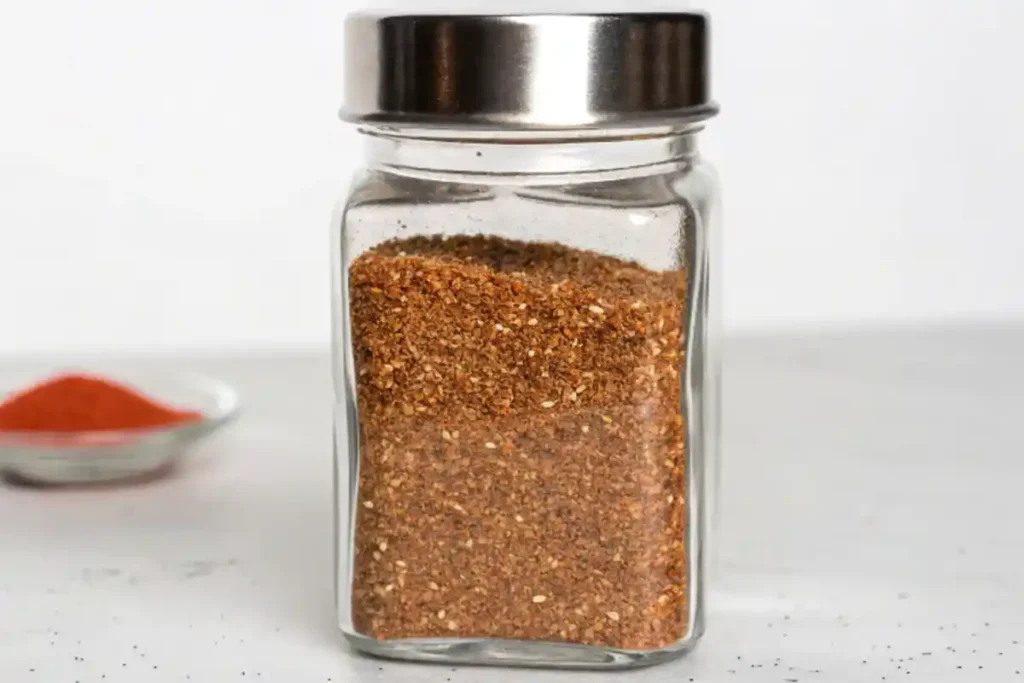
Cooking Methods for Maximum Flavor
Here are some tried-and-true techniques to bring out the best in your prime rib:
- Oven Roasting: Start with a high temperature (450°F) for the first 15 minutes to sear the crust, then lower the heat to 325°F for slow roasting. Use a meat thermometer to achieve your desired doneness (135°F for medium-rare).
- Reverse Searing: Roast at a low temperature (250°F) until the internal temperature is 10°F below your target, then finish with a high-heat sear for a crispy crust.
Pro Tip: Rest the meat for at least 20 minutes after cooking. This step allows the juices to redistribute, ensuring every slice is succulent. Pair your prime rib with a complementary dish like our Garlic Parmesan Chicken Pasta for an unforgettable meal.
Freezing and Storing Instructions
How to Store Rubbed Meat Before Cooking
If you’re prepping your prime rib dry rub in advance, proper storage is key to maintaining the flavors.
- Short-Term Storage: After applying the rub, wrap the prime rib tightly in plastic wrap or aluminum foil. Store it in the refrigerator for up to 24 hours. This resting period allows the spices to penetrate the meat fully.
- Pro Tip: Place the wrapped prime rib on a tray to catch any juices that may seep out during refrigeration.
Freezing the Dry Rub for Later Use
Did you make extra rub? Here’s how to keep it fresh:
- Transfer the rub to an airtight container or a resealable plastic bag.
- Label it with the date and store it in a cool, dark place or the freezer for up to 6 months.
- When ready to use, bring it to room temperature before applying for the best flavor.
Freezing the Prime Rib After Cooking
Got leftovers? Here’s how to freeze cooked prime rib without compromising its deliciousness:
- Slice the prime rib into manageable portions for reheating.
- Wrap each piece in plastic wrap, then place them in an airtight container or freezer bag.
- Freeze for up to 3 months.
Reheating Tip: When reheating, use a low oven temperature (around 250°F) to avoid drying out the meat. For a quick side, try our Sweet Potato Cornbread; it pairs wonderfully with leftover prime rib!
Conclusion
A well-prepared prime rib dry rub is the ultimate secret to elevating your holiday feasts, family dinners, or any special occasion. With its perfect balance of savory spices, this rub enhances the natural flavors of your roast while creating that irresistible crust everyone loves.
By following our step-by-step guide, you’ve learned how to craft a flavorful rub, apply it like a pro, and even customize it to your preferences. Whether you’re letting the rub work its magic overnight or exploring new ways to pair it with side dishes like Sweet Potato Cornbread, your prime rib is sure to impress.
Your next special meal is just a rub away—happy cooking!
FAQs About Prime Rib Dry Rub
Should You Rub a Prime Rib the Night Before?
Absolutely! Rubbing your prime rib the night before cooking is a fantastic way to enhance its flavor. The extended resting period allows the spices in the dry rub to penetrate deeply into the meat, resulting in a more robust taste. Wrap the seasoned prime rib tightly in plastic wrap and store it in the refrigerator overnight for the best results.
What is the Best Way to Season a Prime Rib?
The best way to season a prime rib is to start with a flavorful dry rub. Begin by patting the meat dry, then generously coat it with a blend of salt, pepper, garlic powder, onion powder, and paprika. For an extra kick, add optional herbs like rosemary and thyme or a touch of cayenne pepper. Press the rub firmly onto the meat to ensure it adheres well.
What is the Best Binder for Prime Rib?
While prime rib doesn’t strictly require a binder, using one can help the dry rub stick better. Some excellent options include:
– Olive Oil: Adds moisture without overpowering the flavor.
– Dijon Mustard: Enhances the taste with a subtle tang.
– Worcestershire Sauce: Provides a savory boost while aiding adhesion.
Apply a thin layer of your chosen binder before sprinkling on the rub.
How Early Should You Put Dry Rub on Ribs?
For optimal flavor, apply the dry rub to your ribs 12-24 hours before cooking. This timeline allows the spices to permeate the meat, creating a more delicious and aromatic dish. If you’re short on time, even a few hours can improve the taste significantly. Don’t forget to store the seasoned ribs in the fridge until you’re ready to cook!
Latest Recipes to Inspire Your Next Meal
